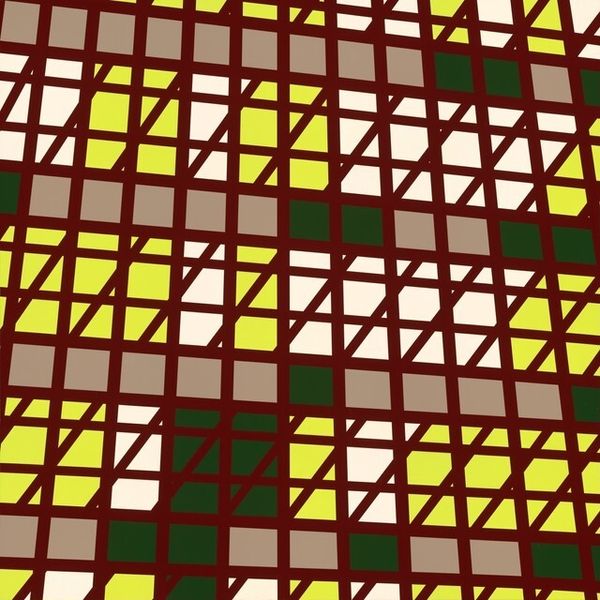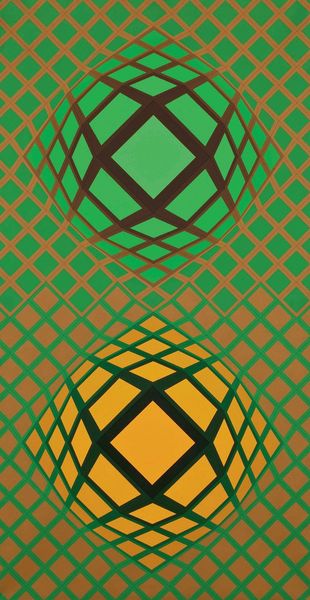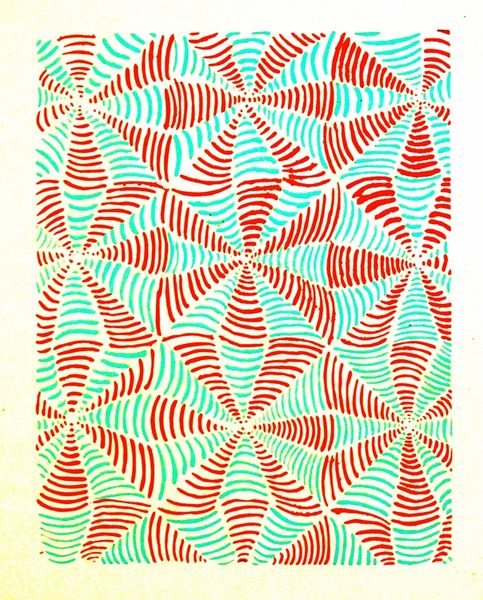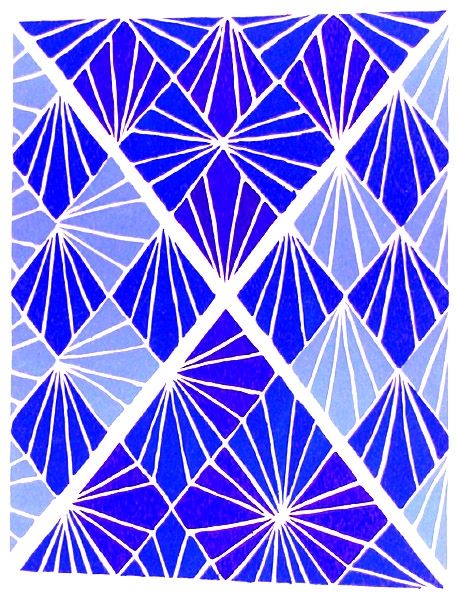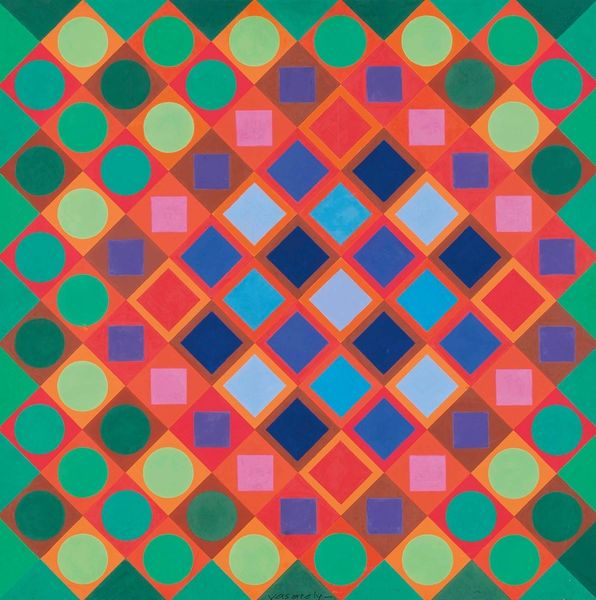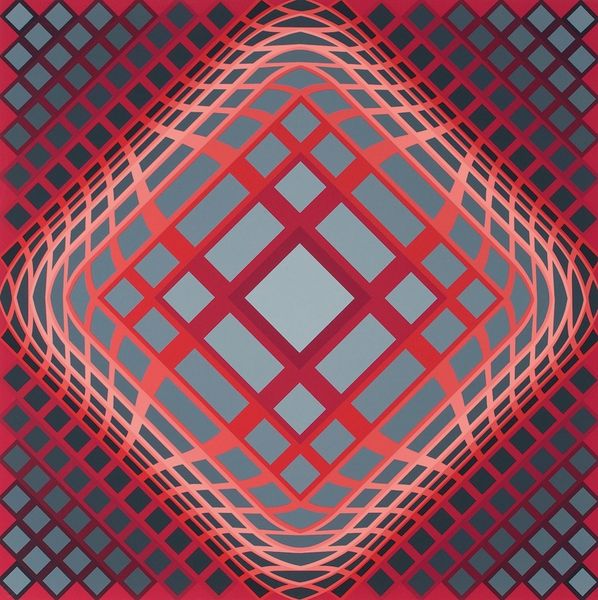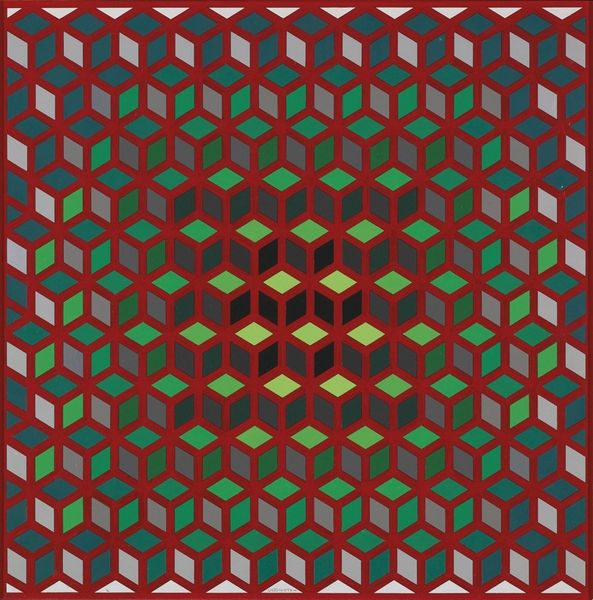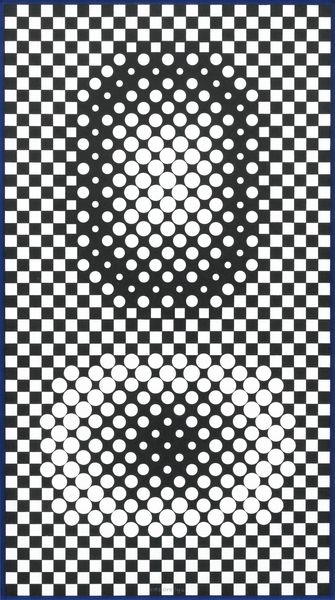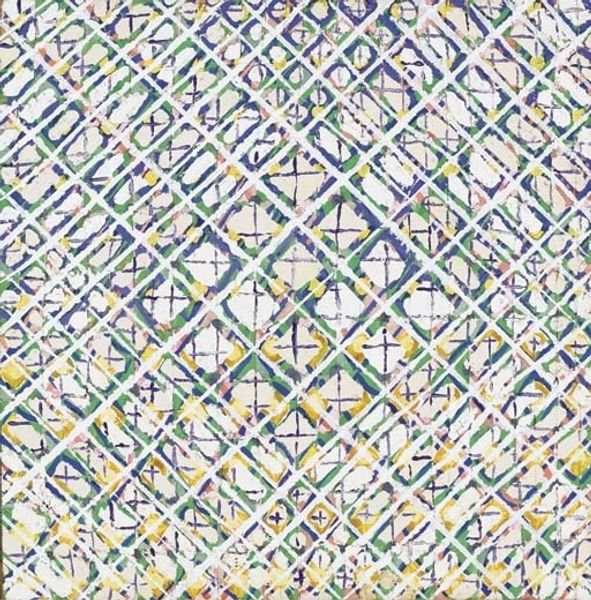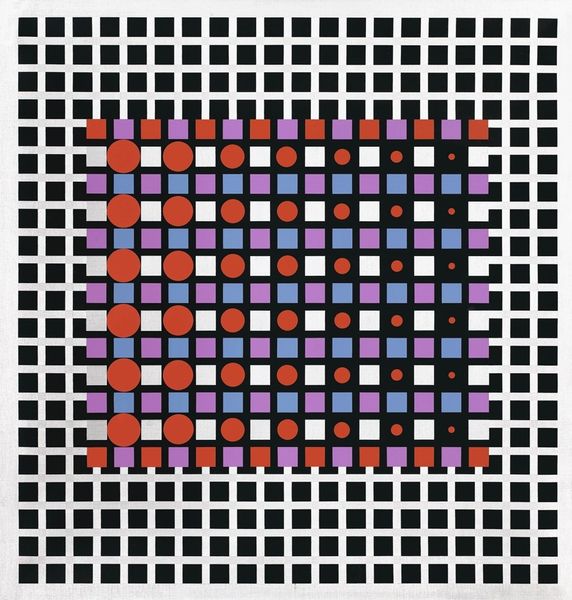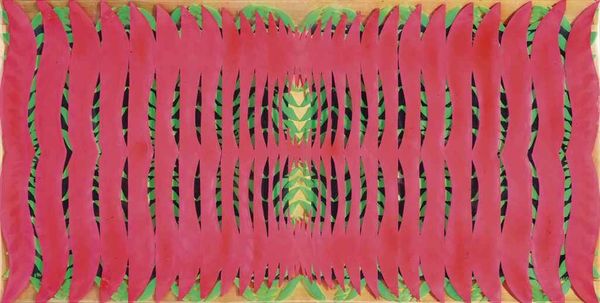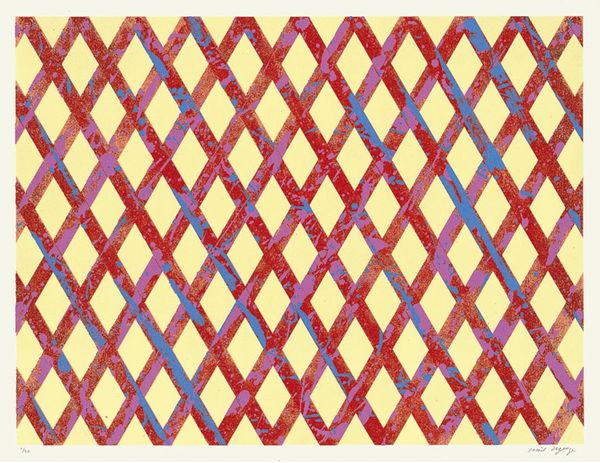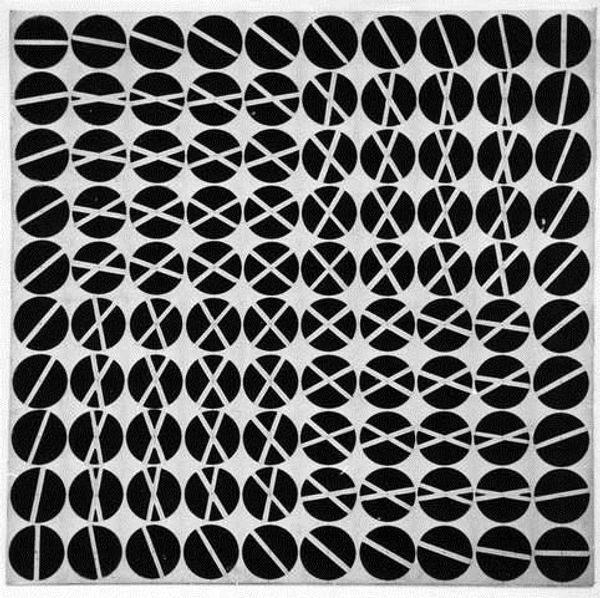
#
geometric
#
abstraction
#
line
Copyright: Sonia Delaunay,Fair Use
Curator: Sonia Delaunay's "Composition 19" from 1930 is an explosion of geometric energy, wouldn't you agree? A symphony of patterns, rendered so meticulously. Editor: It feels a little like controlled chaos. The rigid shapes fighting for dominance, a visual argument unfolding before us. Red, green, and black, each clamoring to be heard. Curator: Delaunay, a key figure in Orphism, often played with rhythm and color. It’s important to remember that Orphism aimed to create purely abstract painting to find the harmony. Editor: But even with this "harmony," there's an underlying tension. Is it intentional, a subtle critique of societal structures reflected in the organized yet chaotic composition? Curator: Perhaps! Given the era—between wars, social upheaval afoot—it’s almost unavoidable to read in some social awareness, I’d suggest that delaunay sees modern life. Editor: Absolutely, the Constructivist and Art Deco vibes mingle in a curious way. It’s decoration, it’s abstraction, it’s possibly social commentary – all wrapped into one visually engaging piece. But is the engagement pleasing? Curator: For some it is a soothing piece because it embraces line and design! I wonder, what’s your connection to art pieces that seem contradictory like that. Do you find them thought-provoking? Editor: I suppose, but I lean into feeling when faced with an image like this! It speaks of order, disorder, constraint, release – and a hint of unease. It also demands patience; this piece wants you to lean closer! Curator: And that's the magic, isn’t it? It's an invitation to think, to question, to perhaps even feel slightly unbalanced, much like the world it reflected. Editor: A mirror to our internal and external battles! I never thought abstract patterns could encapsulate so much, and also be fun.
Comments
No comments
Be the first to comment and join the conversation on the ultimate creative platform.
